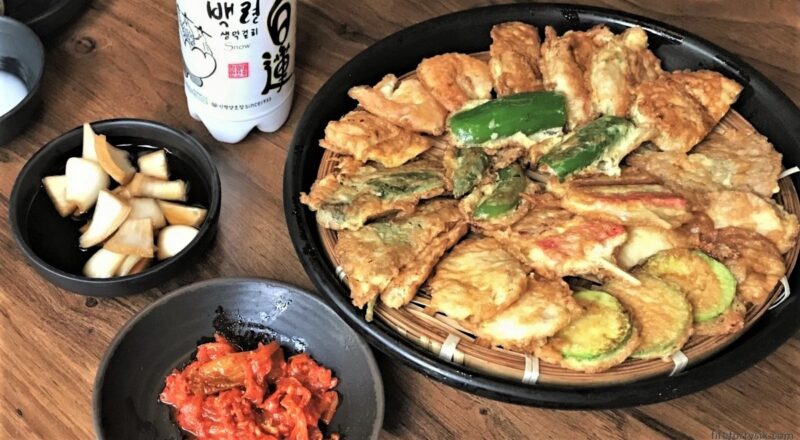One mission of our recent vacation in Seoul was to drink as much makgeolli as possible. Especially since choices in Singapore are quite limited, and whatever is available tends to be relatively overpriced.
So far, during the trip, we had finished three different bottles over three separate meals — spicy agujjim at Masan Seafood, creative Italian fusion at Banjoo Iksun and an impressive hanjeongsik feast at Hangaram.
But as everyone knows, the perfect accompaniment to makgeolli is jeon (전). We hadn’t gotten round to having any yet, and had to address this oversight as quickly as possible.
I found an interesting place in Yeonnamdong (연남동) and we set out to locate it, starting our walk from Exit 3 of Hongik University (i.e. Hongdae) station, on Line 2 of the subway system.
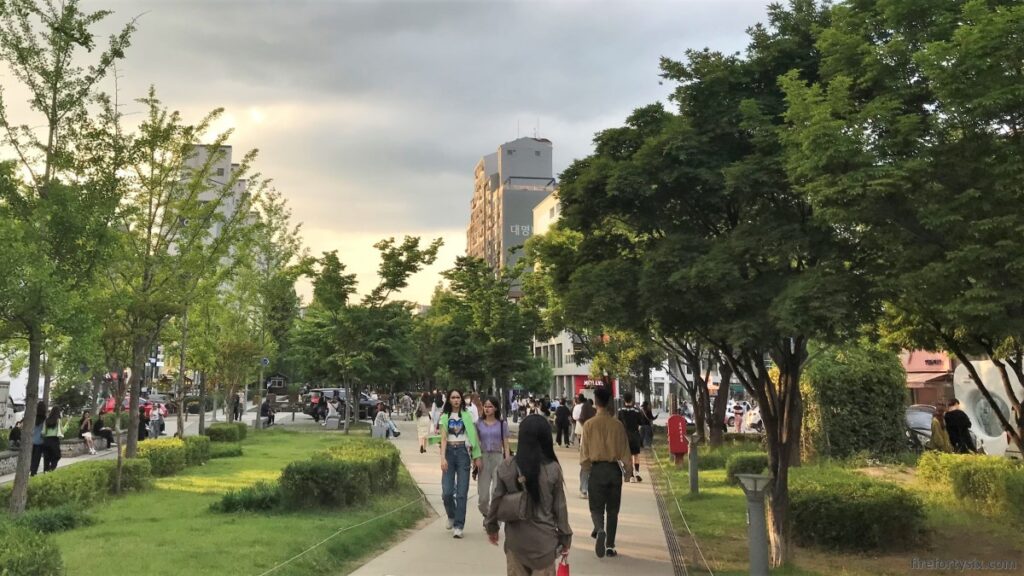
John Makgeolliano (줜막걸리아노)
In my mind, there were only two possible explanations for the restaurant’s unique name.
One, the owner, presumably named John, is a direct descendent of the secretive Makgeolliano clan from Sicily.
Two, it was a play on words using the name of the infamous designer John Galliano, cleverly weaving in “makgeolli” and a homonym for “jeon”.
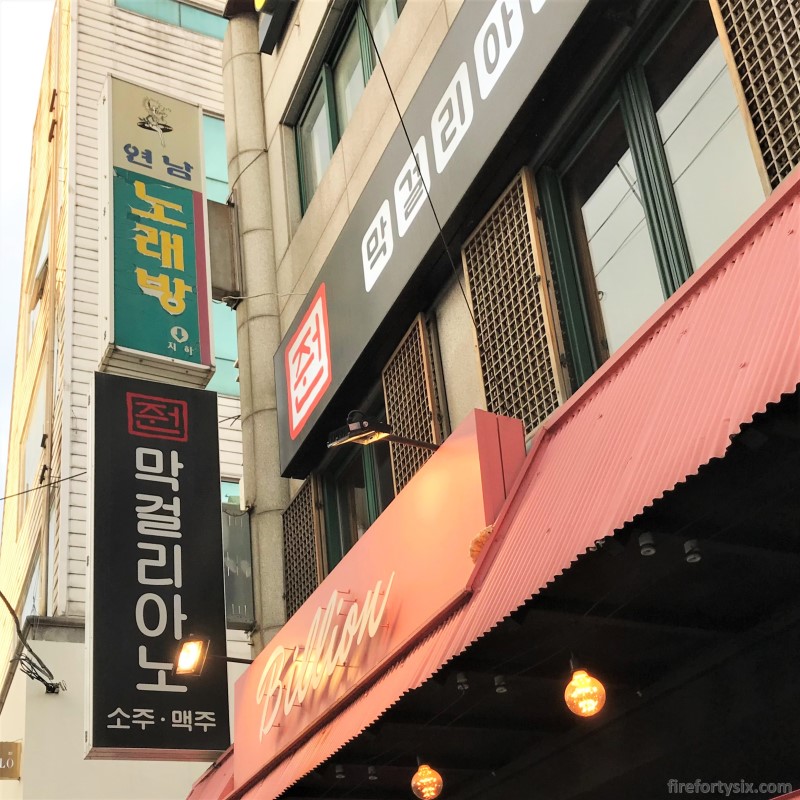
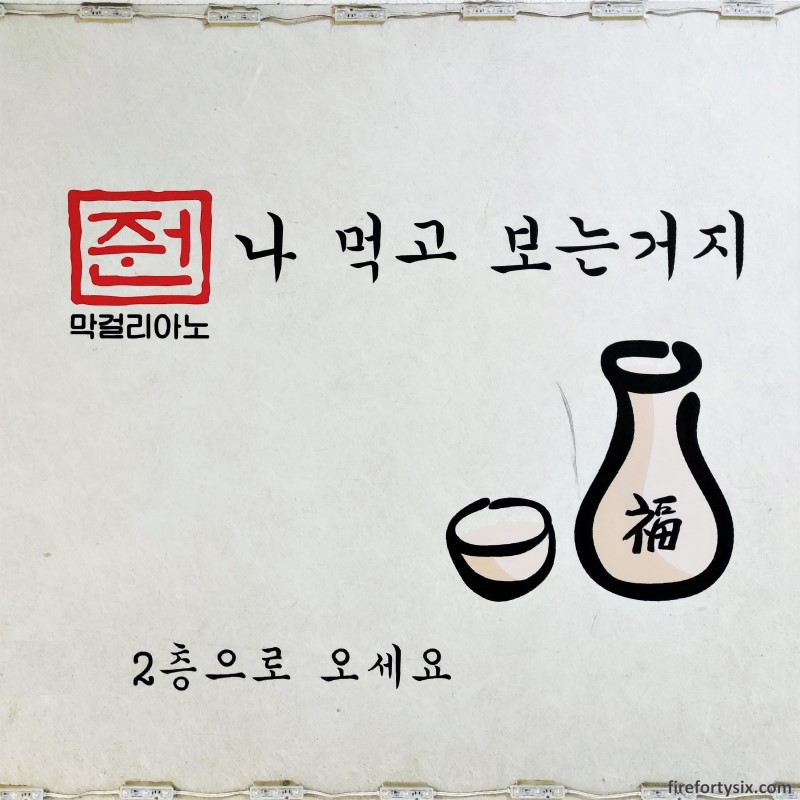
I’m 99% sure that it’s the second one, even though there are rumours that members of the Makgeolliano clan have a particular liking for Korean rice wine.
The restaurant (Naver Maps, Google Maps) was located on the second floor, but after climbing up a flight of stairs, we were faced with a plain signboard-less entrance.
Written in hangul, the only visible signs said 화장실 (hwajangsil) with arrows pointing upwards.
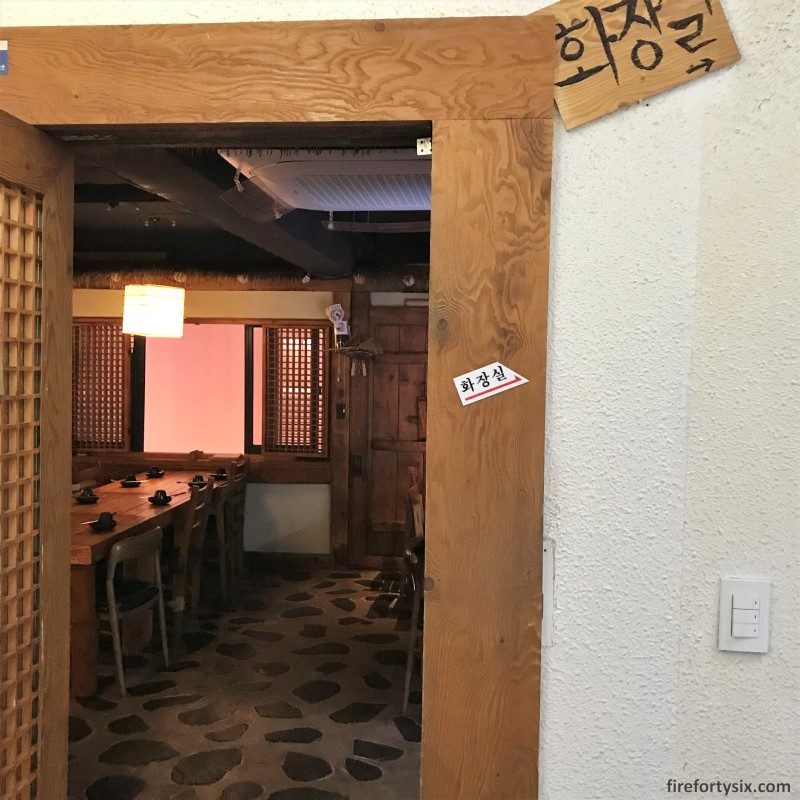
If you don’t already know, it is one of the most, if not the most, important Korean words a tourist has to recognise. Because it means “toilet”, and as we all are acutely aware, when you have to go, you have to go.
I stuck my head through the door and spotted an ajumma unnie busy at work in the kitchen. She noticed me and quickly hustled over.
“John Makgeolliano?” I enquired.
She nodded in affirmation and ushered us to our seats, passing by a fridge stocked with all sorts of Korean alcohol along the way.

The interior had a cosy and homely ambience, with well-worn wooden furniture and pillars. It exuded the same rustic vibes as the restored hanok houses that we visited at Ikseondong, especially the Tteuran Teahouse.
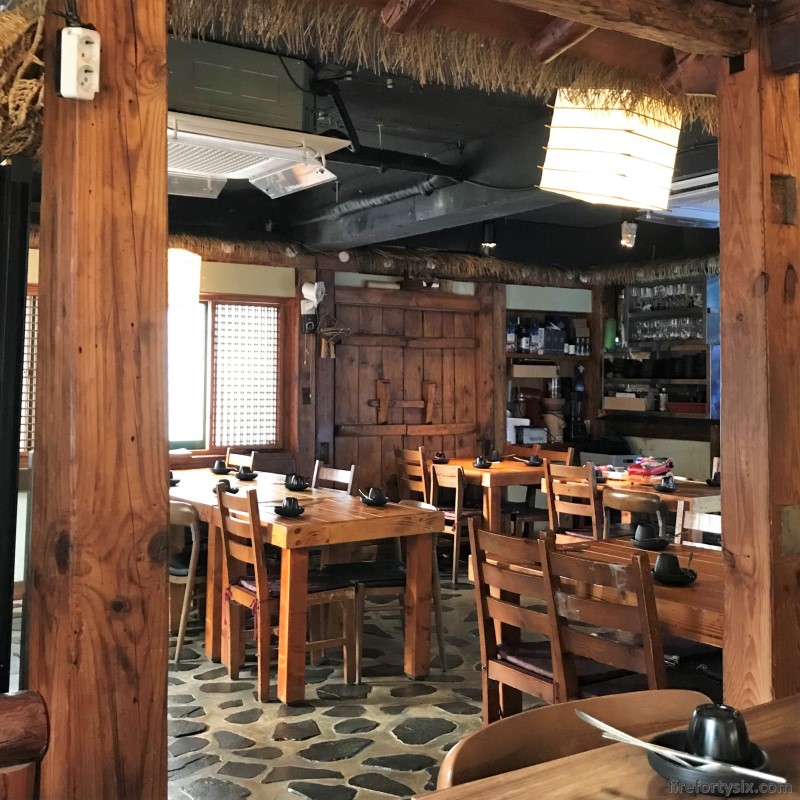

Menu
All the food options fitted easily on one page, with assorted jeon given top billing. The headline act was prominently displayed on the top left, emphasising the classic pairing of jeon and makgeolli.
At ₩25,000 for nine types of jeon, it was more expensive that what you’d find in markets or at roadside stalls, but rent in Yeonnamdong had to be expensive.
The restaurant name was written vertically in large bold font and fairly cursive script. I found it amusing that Papago had chosen to give up, and simply declared: “I don’t know”. Kudos for being honest, I suppose?


We figured that the jeon platter would be quite substantial, and held off ordering any other dishes until it physically arrived.
If it wasn’t enough, we could always add another item. The seafood jjamppong soup and beef intestine hotpot sounded particularly appetising.
But first, makgeolli
Half of their four-page drinks menu was dedicated to makgeolli, with a “normal” section followed by a more “premium” list.
We tried getting recommendations from our waiter, but the language barrier proved to be insurmountable. In the end, we had to rely on the translations by Papago and chose the White Lotus (백련) in the non-premium list.




It was touted as being selected for a 2009 Cheong Wa Dae (i.e. Blue House) dinner. I figured that if it was good enough for a former South Korean President, it had to be good enough for us.
A white 750ml bottle (₩6,000 ) arrived with a complimentary banchan of kimchi and tofu, possibly the second-most classic pairing after jeon.
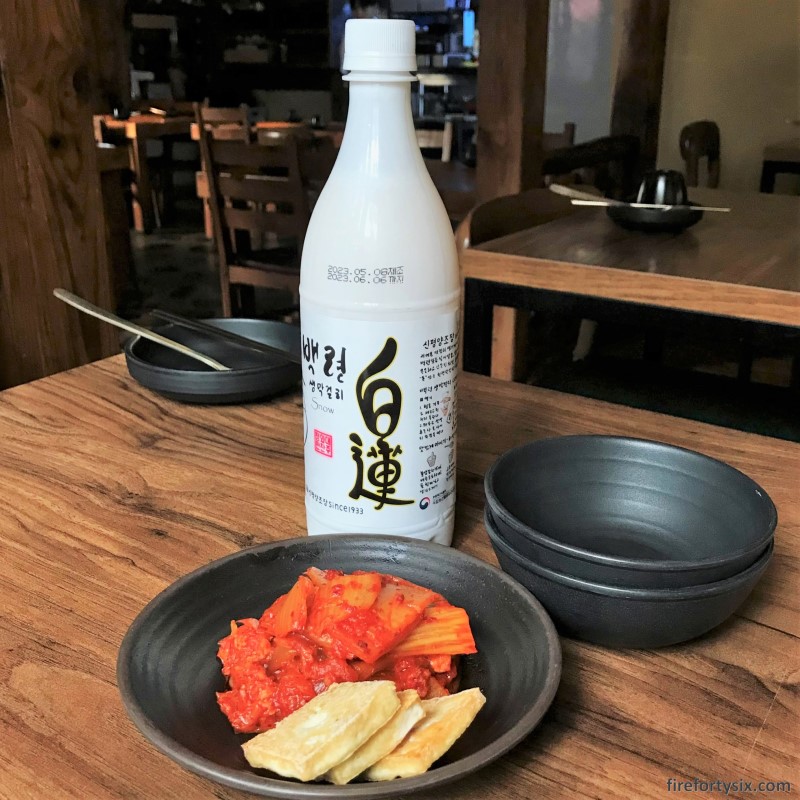
The White Lotus was clearly a step up from the light and citrusy salaryman’s favourite Jangsu (장수) that we had at Masan Seafood.
It was rich and creamy, like the BSD 100 Million we drank at Hangaram, but not as refreshing as the fruity DOK from Banjoo Iksun.
Overall, it was decent, though not particularly memorable. It did, however, go quite well with the sour and spicy kimchi and nutty pan-fried tofu.
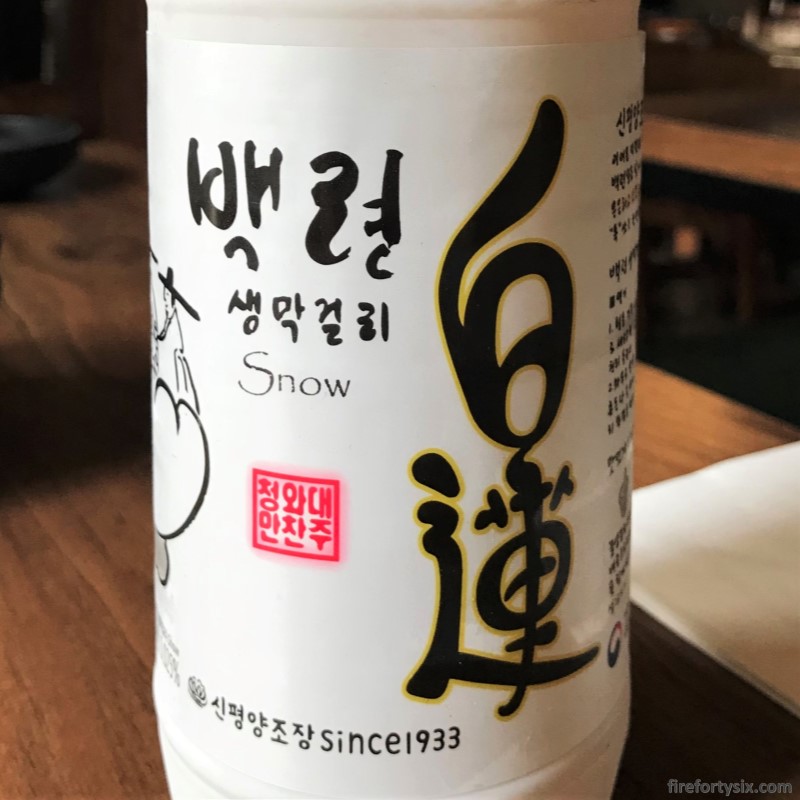
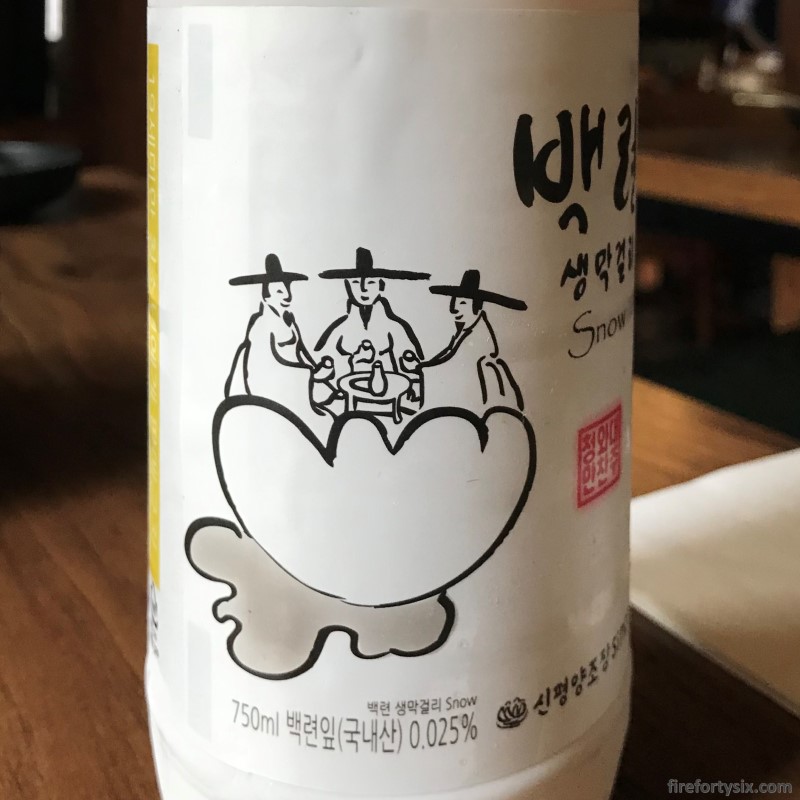

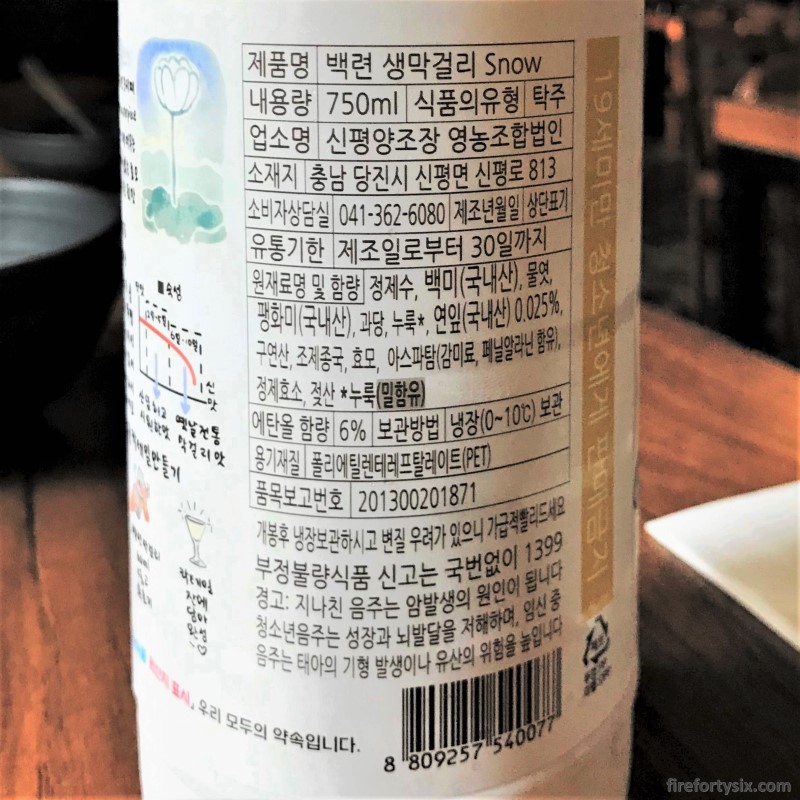
Assorted Jeon
The jeon platter, on the other hand, was quite impressive. When it was served, the size took us by surprise.
There were at least two each of the nine different types of jeon, for a total of more than 20 pieces. Our earlier decision not to order anything else proved to be wise.
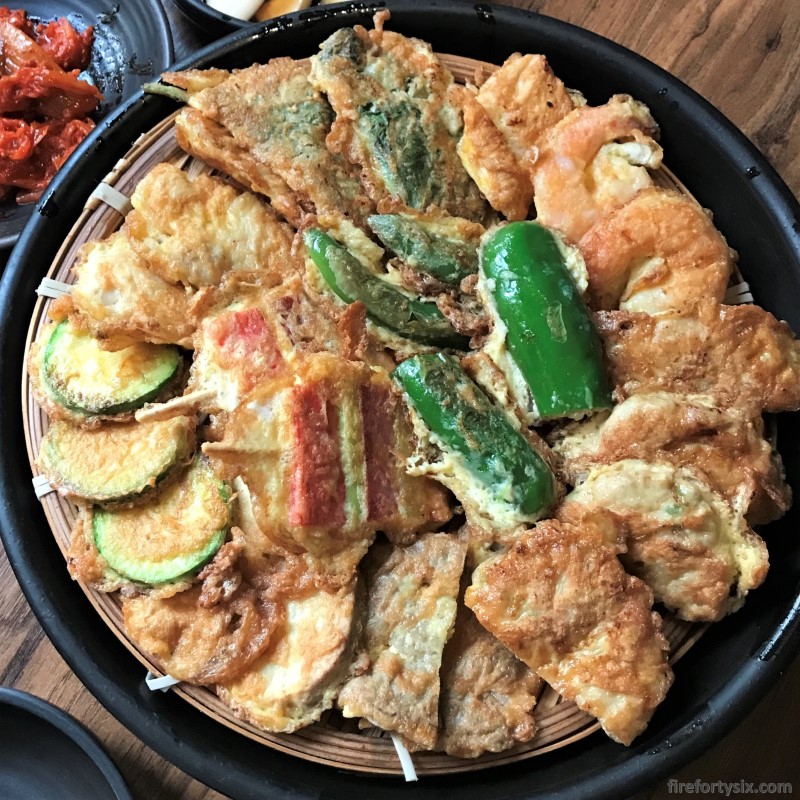
Each piece was coated with an egg batter and pan-fried to a golden brown. Given how pleasantly eggy it all tasted, I’m not even sure whether any flour was used at all.
Vegetables were well represented, with zucchini slices, mushrooms, perilla leaves and stuffed peppers making an appearance.
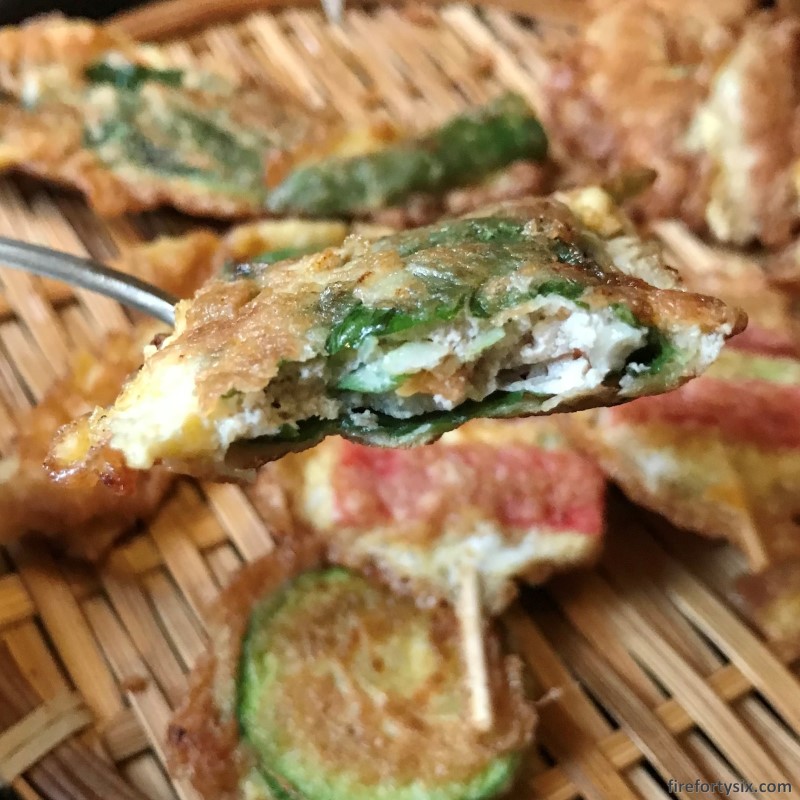
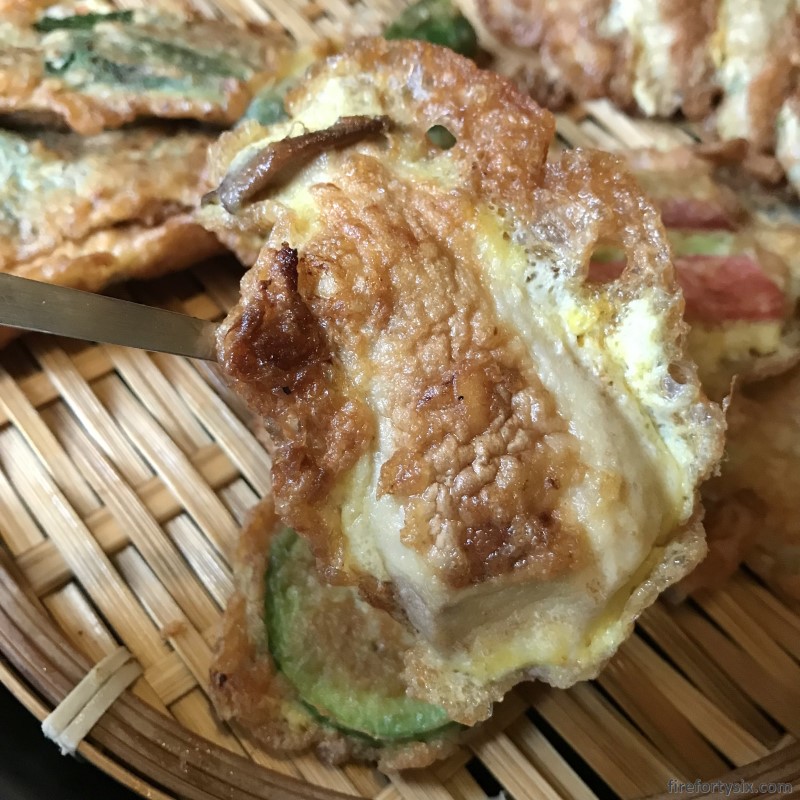
Proteins also made their presence felt, with tender slices of beef, flaky chunks of white fish and whole juicy prawns. Every item tasted fresh and flavourful.
A side dish of marinated raw onion slices was provided, which helped to reset the palate in between bites. As did the kimchi, which quickly ran out and had to be refilled.
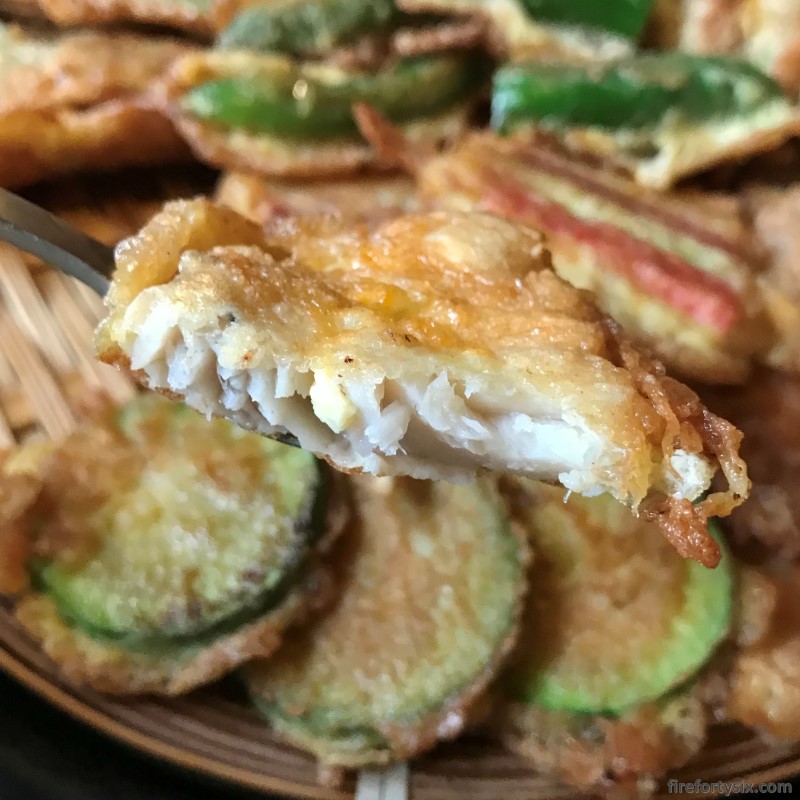
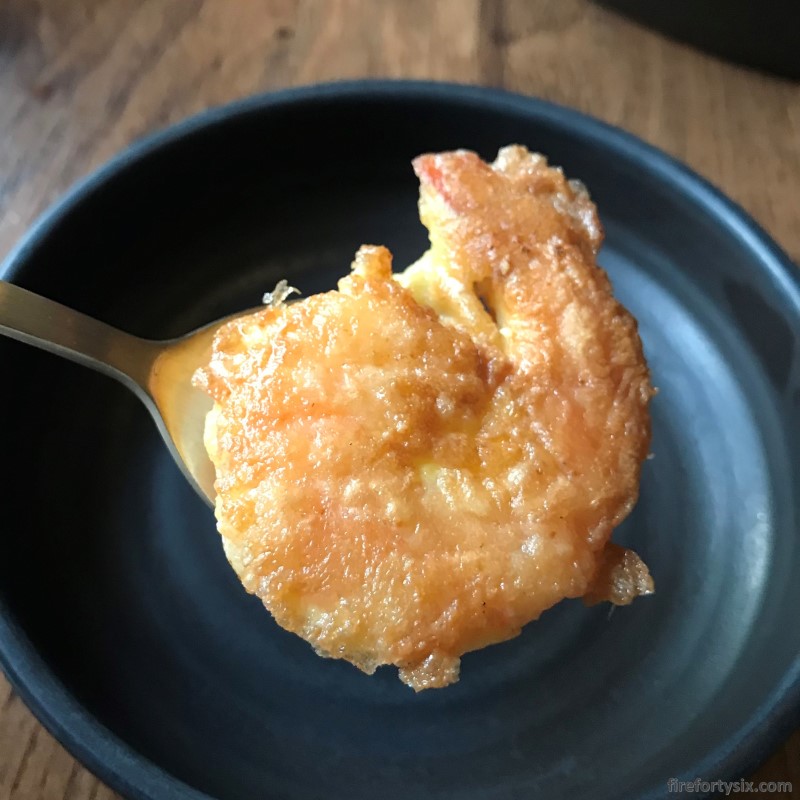
For me, the most interesting piece was a skewer of crab stick, spam and pickled radish. Not only was this artificial surf-and-turf morsel colourful, it was also very tasty and provided a nice contrast in textures.
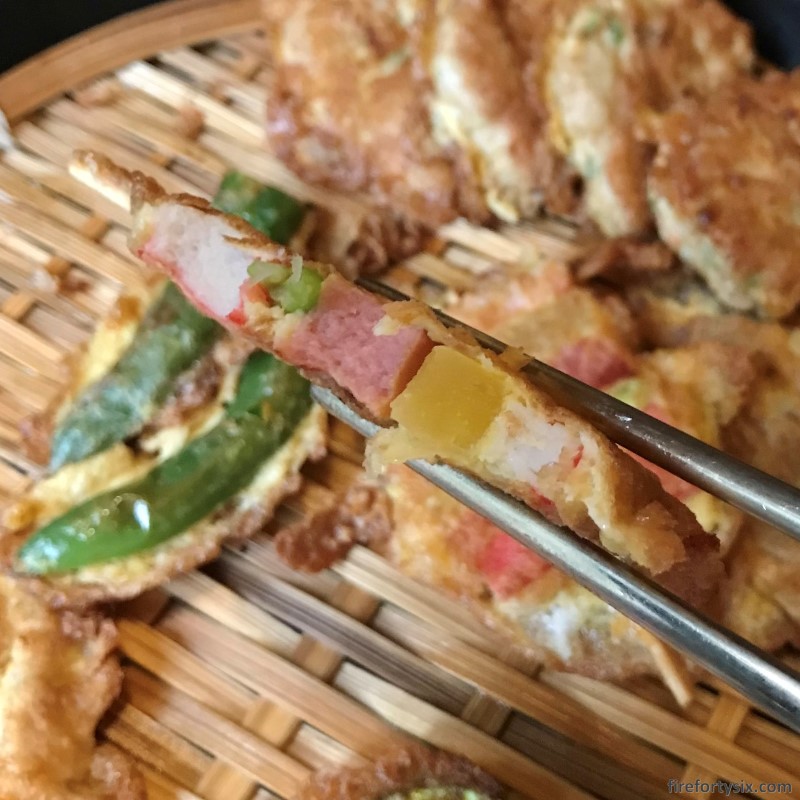
I’m not sure if this was a common item or their own creation, but from now on, I’ll be actively searching for it every time we have jeon. Yes, the processed meat and seafood components make it quite junky, but jeon is not known to be health food anyway.
Yeonnamdong (연남동)
By the time we finished, it had gotten dark and Yeonnamdong was starting to get crowded.
The main stretch had long tree-lined footpaths that were really nice for a pleasant stroll. It was flanked on both sides by numerous restaurants and drinking places, many of which I understand popped up once the neighbourhood was designated a “hot place”.
I could see why it was popular. Easily accessible via the subway, with plenty of greenery and a laid-back vibe, it had the vibrancy of Hongdae and Myeongdong but without the overbearing crowds.
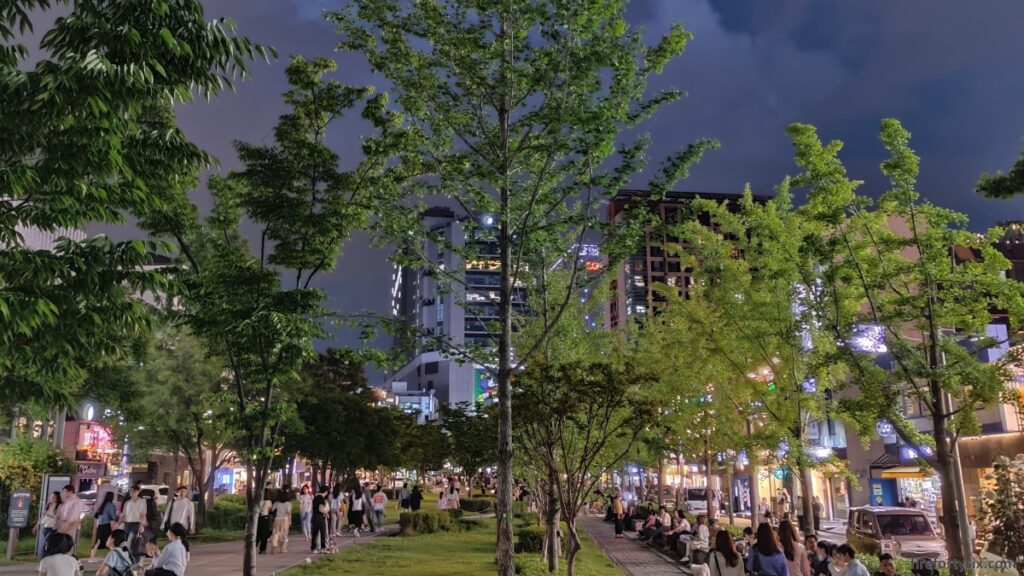
If you haven’t visited Yeonnamdong before, it might be worth your while to spend some time there.
Take a nice and slow walk along the Gyeongui Line Forest Park, and when you’re done, end the day with some jeon and a bottle (or two) of makgeolli at John Makgeolliano.
